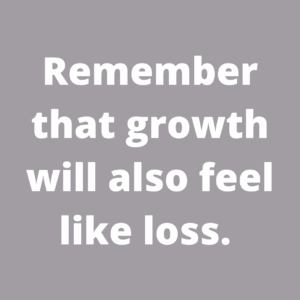I selected this quote from Breaking Benjamin’s song, Dairy of Jane, which was released in 2006. It’s an old saying, though. And throughout history, many have remarked that there seems to be a fine line between love and hate.
But is there really? Surprisingly, the answer is yes. Some of the same nervous circuits in the brain responsible for hate are the same that are activated during love.
For starters, love and hate are both intense emotions. I know when I have been really hurt by someone I love, I have felt hate towards them in the moment. And it quickly fades away after the pain subsides. The intensity and duration of these emotions will vary from person to person. For me, it’s actually hard to stay mad at someone for too long. I’m the kind of person who, while still being mad at you, will think of something randomly that’s hilarious, go to call you and then stop because I have to remind myself I am mad at you.
While your individual mileage may vary, both emotions are strong in that when you love someone, you don’t say, “I love you a little bit”. Or when you feel hate towards them, you don’t say, “You know, I kind of hate you”. You feel it strong. And these intense emotions can be tricky because when you feel them, it can be hard to remain objective about the relationship.
When it comes to feeling love, we are more vulnerable to feeling hurt if their love isn’t reciprocated the same way. Or they do something to hurt you, whether it’s intentional or not. The sting from that kind of pain can quickly change your feelings for them from love to hate.
When you love someone, sometimes you find yourself putting up with all kinds of things you wouldn’t ordinarily put up with. Or perhaps you have chosen to move across the country for them to a place you don’t really like, but he or she wants to be there. We will move mountains for love.
If you hate someone enough, they could go over and beyond to right a wrong and it doesn’t matter to you. Both emotions cause us to go in extremes, and it seems like it can change in an instant.
What Makes You More Vulnerable to Cross the Line From Love to Hate
There are a few feelings that are apt to cause you to cross the line between love and hate. By being mindful of these things, you can temper your emotions.
Rumination
When we dwell on past hurts, we are inching closer to that fine line. We may find ourselves wondering why that person hurt us over and over again. The more you ruminate and fixate on it, you will seek answers in regular conversation. If your partner doesn’t pick up on it or says something insensitive, you may feel hatred towards them for not getting how much they hurt you. If you have chosen to stay and work through the hurt, make sure it is fully resolved before moving forward.
Jealousy
Jealously can rear its head when we are feeling insecure. If we suffer from low self-esteem, we may feel like we aren’t worthy of being loved back. To protect our egos, we prepare ourselves for the worst outcome. That is why we start reading too much into innocuous things, like the way your boyfriend smiled at the barista at Starbucks. It likely was him just being nice, but perhaps you worry that he’s interested in her. Your love may turn to hate because you feel so wounded by “his behavior.”
Possessiveness
Possessiveness is a natural outgrowth of insecurity. We get possessive when we seek to control someone else, so that we feel at ease. It’s ineffective and you end up pushing the other person away because they don’t want to be controlled. You might find yourself controlling where they go, who they hang out with or even manipulating situations to ensure that your partner stays away from other people. This kind of behavior has the potential for both of you to cross the line from love to hate.
How Do You Avoid a Love/Hate Relationship?
The most effective way to avoid this dynamic is work on your self-esteem and understand your attachment style. Knowing how you attach to others can help you understand your own vulnerabilities in relationships. It will give you a map and compass on what you need to do to become more emotionally independent. I wrote a post a couple of years ago all about attachment styles and how you can break unhealthy patterns. You can check it out here.
In addition, it is helpful to understand what a healthy relationship really looks like. Unfortunately, our culture is constantly altering the image of how a good relationship should be and it doesn’t help that we have less examples around us to show us.
I also wrote a post a couple of years ago going into detail about the ten components of a healthy relationship. I’ve listed the ten traits below, but you can read in depth about each here.
- You can be happy and whole on your own.
- There is trust on both sides.
- Each person is authentic, and they love and respect who each other is at their core.
- You both know how to effectively communicate.
- Each person takes personal responsibility for their own feelings, actions and thoughts.
- You treat each other with respect.
- You both welcome boundaries and aren’t offended by each other setting them.
- Each partner makes the relationship a priority and actively put forth effort.
- You both know how to resolve conflict.
- Both show gratitude and appreciation for each other.





